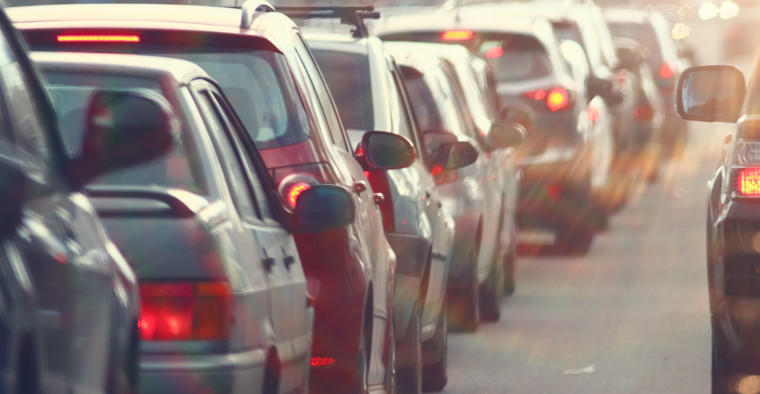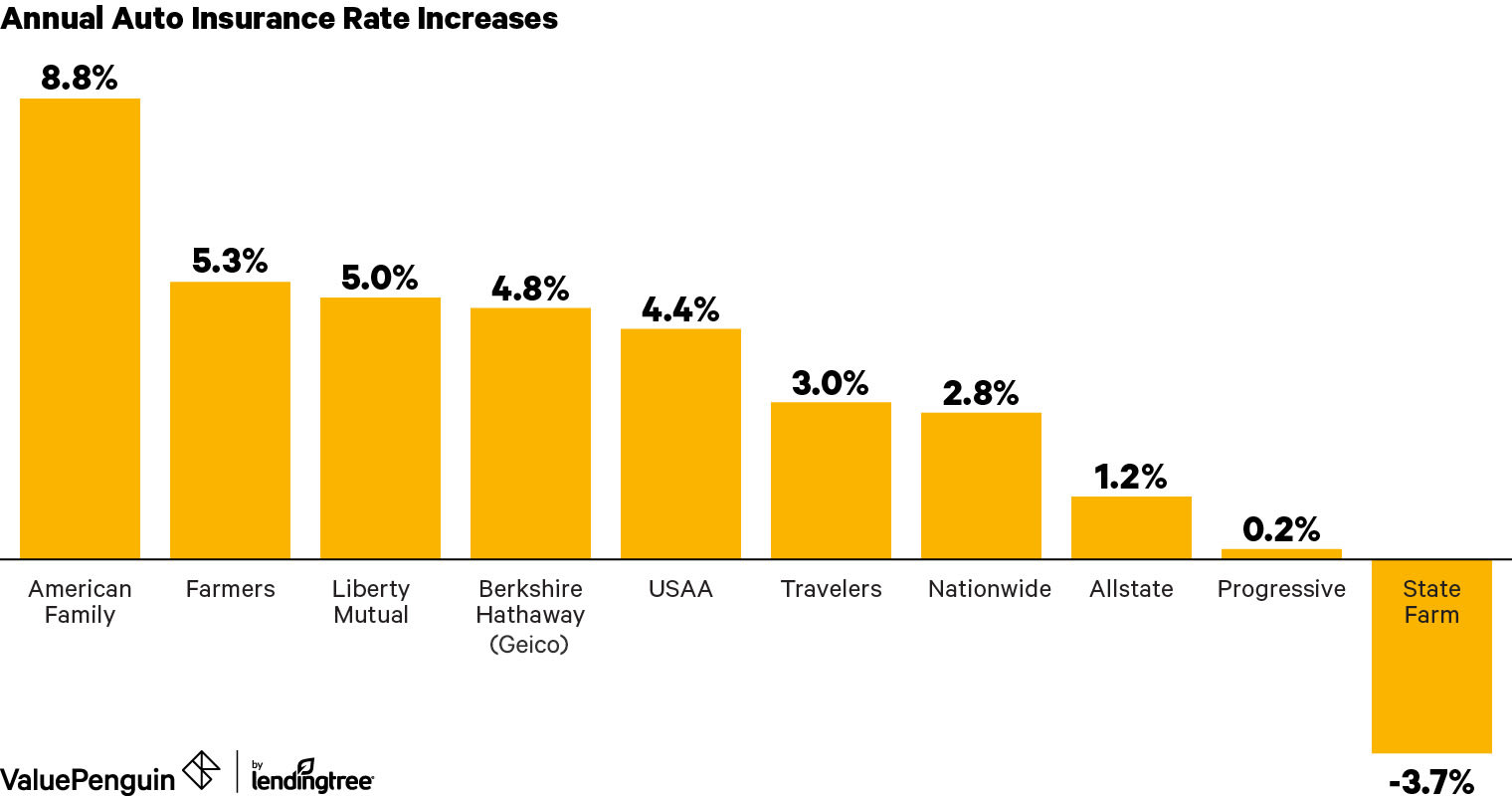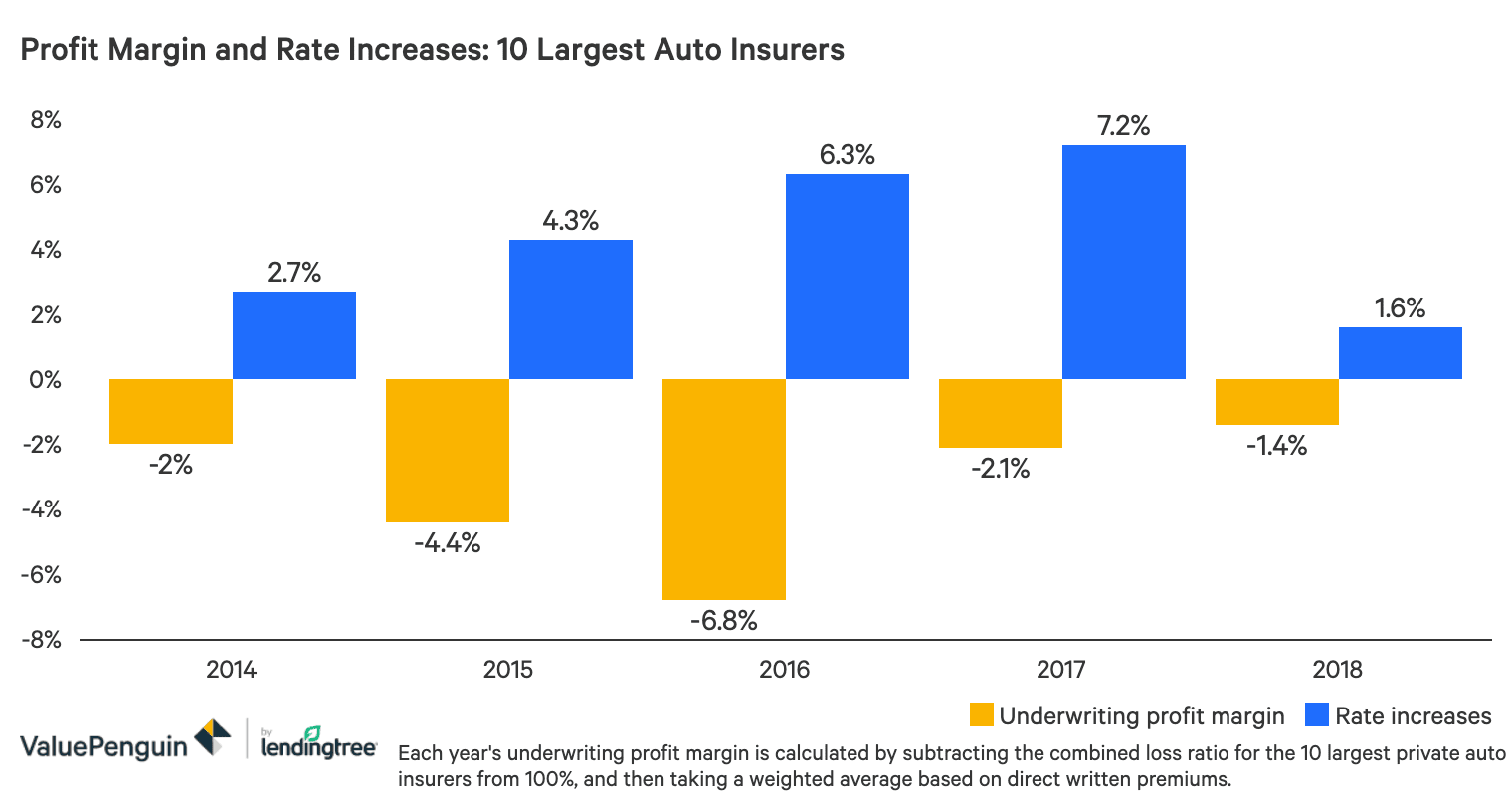Auto Insurance
Why Auto Insurance Rates Are Likely to Increase in 2020

The combination of record-setting natural disasters, an uptick in distracted-driving accidents and the increasing prevalence of tech-loaded vehicles that are expensive to repair mean insurers are likely to raise rates in 2020.
Find Cheap Auto Insurance Quotes in Your Area
These factors, coupled with the fact that insurers have failed to turn an underwriting profit in recent years — despite year-over-year rate increases — indicate that drivers will pay more for car insurance in the coming year.
Why are auto insurance rates continuing to climb?
One of the main reasons insurers are likely to raise car insurance rates is to adjust for increased losses. These are usually attributed to an increase in the frequency or cost of car insurance claims.
Heightened losses in recent years have led to a 1.6% rate hike across the 10 largest auto insurers in 2018, following a 7.2% increase in 2017. These rate increases followed years in which eight of the 10 largest auto insurers reported a negative underwriting profit.

Find Cheap Auto Insurance Quotes in Your Area
In the table below, a combined loss ratio of more than 100% indicates the company incurred more in losses and expenses than it earned in premiums.
Rank | Insurer | Direct written premiums 2018 ($ billions) | Combined loss ratio 2018 | 2018 rate increase |
|---|---|---|---|---|
| 1 | State Farm | $41.95 | 99% | -3.7% |
| 2 | Berkshire Hathaway (Geico) | $33.08 | 102% | 4.8% |
| 3 | Progressive | $27.06 | 104% | 0.2% |
| 4 | Allstate | $22.66 | 101% | 1.2% |
| 5 | USAA | $14.47 | 102% | 4.4% |
| 6 | Liberty Mutual | $11.78 | 100% | 5.0% |
| 7 | Farmers | $10.50 | 101% | 5.3% |
| 8 | Nationwide | $6.73 | 98% | 2.8% |
| 9 | Travelers | $4.70 | 103% | 3.0% |
| 10 | American Family | $4.69 | 103% | 8.8% |
Insurers will likely continue with rate increases if they continue to see negative underwriting profit margins.
Across the 10 largest insurance companies, this trend has been linked to increased car insurance rates in recent years.
From 2014 to 2018, these companies posted a year-over-year average underwriting profit margin of -3.3% and average rate increases of 4.4%.

Insurance companies cannot raise premiums instantaneously to reflect incurred losses. That's because rate changes — in most states — must be submitted and reviewed by the state's department of insurance before they can go into effect. As a result, rate changes that are brought on by a loss-causing event — such as a hurricane — may take some time to go into effect.
Why are auto insurance companies losing money?
A slew of devastating natural disasters struck the U.S. in 2019, resulting in insurance claims that cost billions of dollars. While home insurers are usually hit the hardest by these disasters, auto insurers are affected as well.
Additionally, distracted driving has led to an increase in accidents on the road. These factors, coupled with the fact the auto industry is moving toward higher-tech cars that are more expensive to repair, contribute to high losses for insurers.
Record-setting natural disasters
Natural disasters inflicted huge losses on insurers in 2018 and 2019. Preliminary reports from the California Department of Insurance estimate that the November 2018 wildfires caused more than $123 million in auto and nonresidential insurance claims. Additionally, hurricanes Michael and Florence, which pummeled the Southeast in the fall of 2018, caused between $7.7 billion and $14.6 billion in insurance losses.
Damage resulting from natural disasters — such as your car flooding during a hurricane or burning up in a wildfire — is usually covered by comprehensive car insurance. This coverage pays to repair or replace your car in the event that it is damaged in something other than a car crash. Increased comprehensive claims lead to greater losses for auto insurers.
Increased distracted driving accidents
An additional possible contributor to future rate hikes is the increased frequency of car crashes attributed to distracted driving — caused in large part by more people using their phones while driving.
The National Highway Traffic Safety Administration (NHTSA) reports that 2.443 million people were injured in distracted driving crashes in 2015, which is an increase from 2.217 million people in 2011. Insurers respond by raising rates to make up for the increase in insurance claims they have to pay out.
More expensive vehicle repairs
Higher repair costs for new vehicles — which are increasingly packed with sensitive and expensive technology — mean insurers are likely to increase premiums to make up for this increase in losses.
As of May 2018, all new vehicles are required to have rearview video systems (backup cameras) in accordance with NHTSA regulations. Although this type of vehicle technology has proven to reduce the number of accidents caused by human error, it has also made common and previously inexpensive repairs — such as bumper replacement — more expensive, increasing the potential losses for insurance companies.
How much will car insurance cost in the future?
It is difficult to project whether rates will continue to rise, as there are so many factors that determine car insurance pricing. If loss-causing trends continue — such as more expensive vehicle repairs, distracted driving crashes and vehicle damage due to extreme weather — consumers should see premiums increase. Insurance costs might also increase due to price optimization.
However, if these trends reverse and there are fewer accidents and milder weather, then car insurance rates could plateau or even decrease.
Because there are so many factors that drivers can't control, the best way to save money on insurance costs is to shop around for coverage. Comparing quotes from at least three or four companies is one way to help ensure you're getting the cheapest car insurance possible.
Methodology
Combined loss ratio and direct written premium information for private auto insurance was gathered from the National Association of Insurance Commissioners (NAIC) and S&P Global, a financial data resource for the insurance industry.
Rate increase figures were obtained from RateFilings.com and represent a weighted average across the 50 states based on written private auto insurance premiums.
